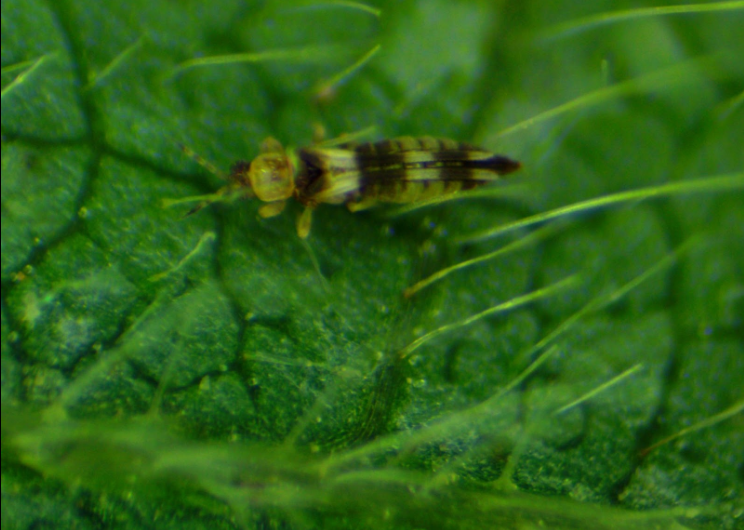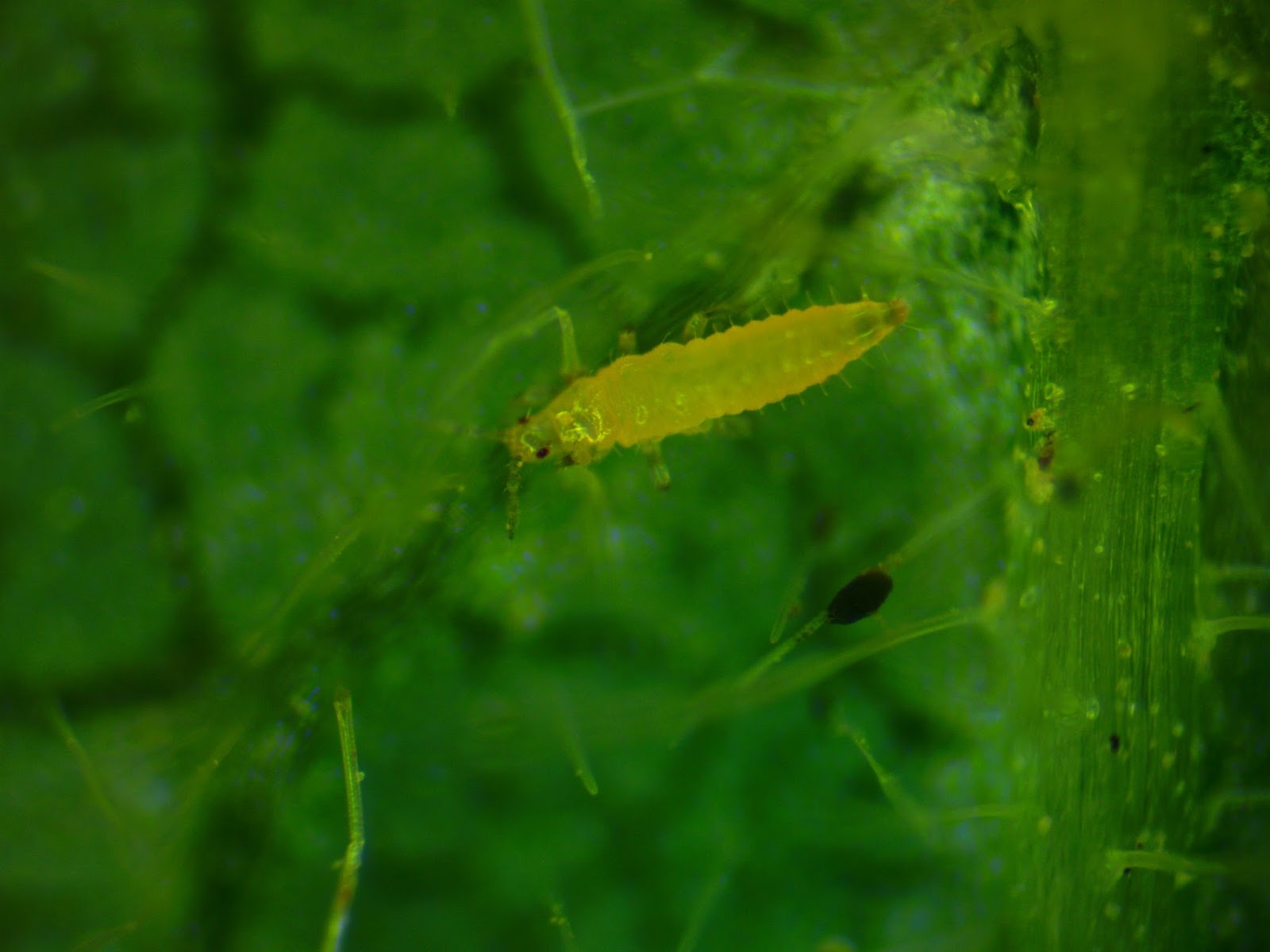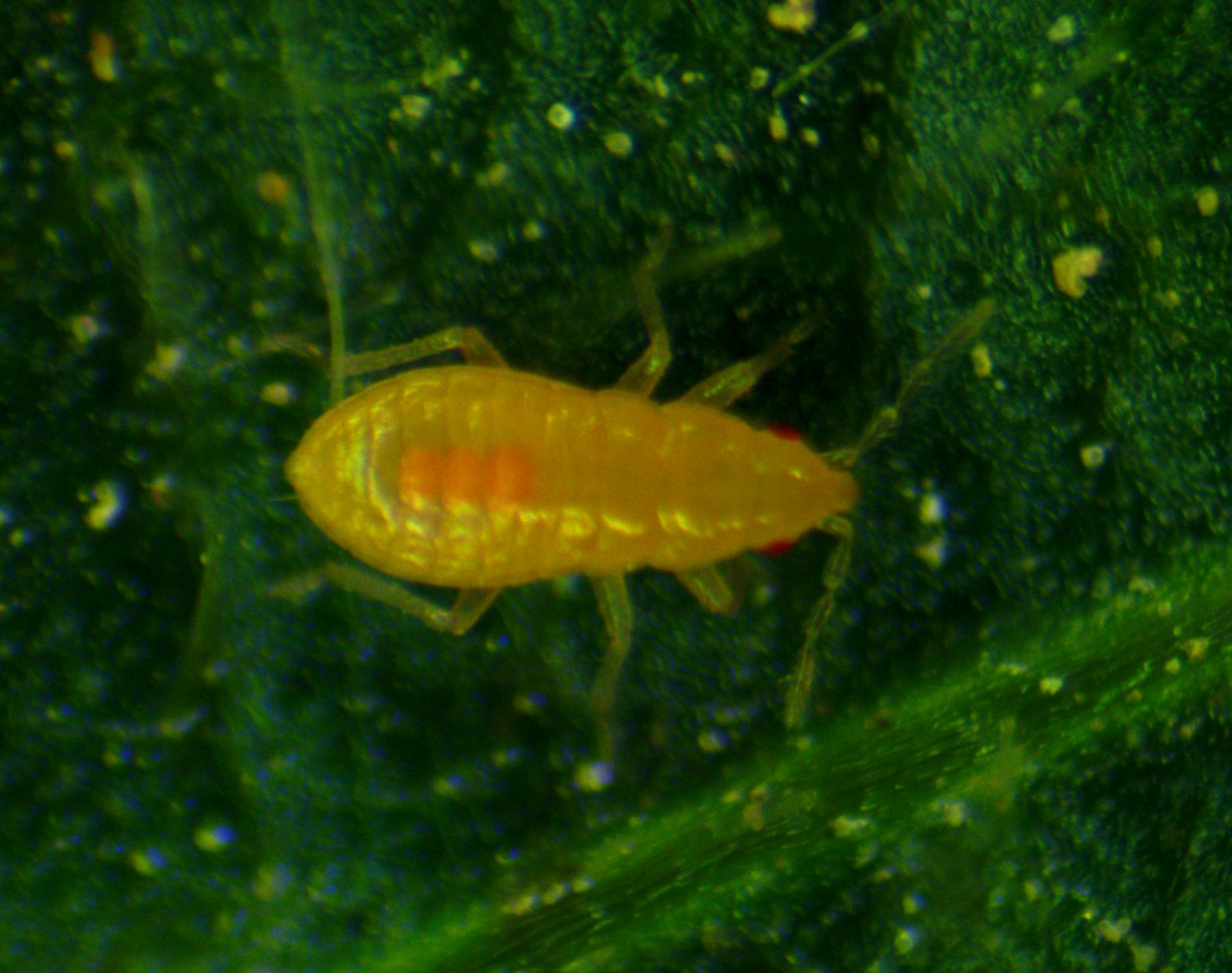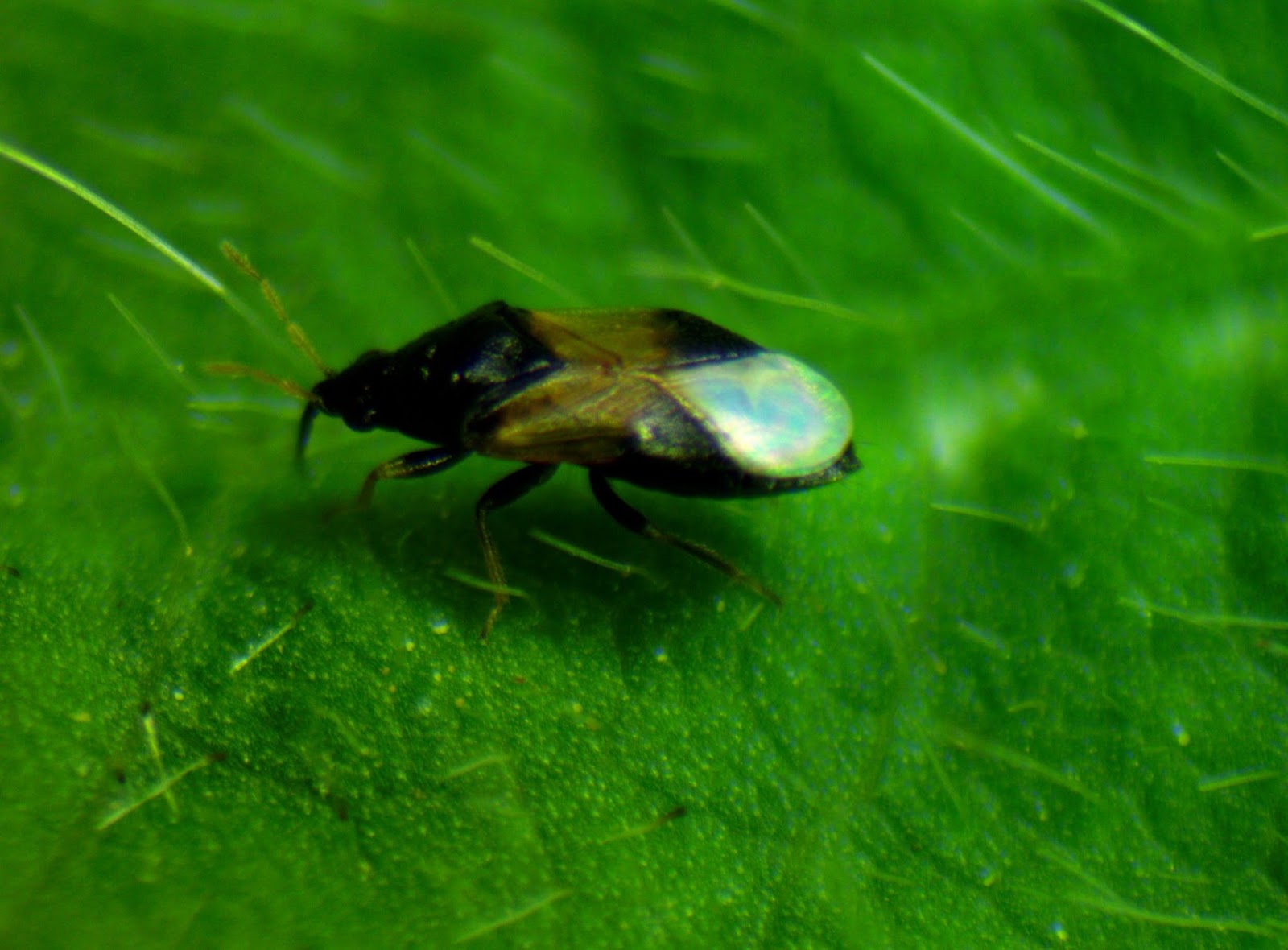By Raul Villanueva, Extension Entomologist
While monitoring an experimental soybean field in Princeton, I haven’t noticed major insect pest problems during the earlier stages of soybean growth, with the exception of thrips.
Thrips are tiny, slender insects (less than 1/16-inch long) with characteristic fringed or bristled wings. They have rasping and sucking mouth parts. During feeding, mouth parts scrape the epidermis of the soybean leaf (it can damage flower, bud or fruit on other plant species) and then suck plant fluids. In addition to these plant-feeding thrips, there are beneficial thrip species that prey upon small insects and spider mites.
Leaves damaged by thrips have a silver coloration and, after a close inspection, black spots can be found on leaves. These spots are frass or feces deposited by thrips after feeding. Leaves can also show a deformation or “cupping” shape. Thrips are also vectors of viruses, such as soybean vein necrosis.
Thrip Species on Soybeans
There are several thrip species on soybeans. The most common are the soybean thrip (Sericothrips variabilis), a striped or dark-and-white banded thrip (Figure 1), wheat thrip (Frankiniella tritici), and tobacco thrip (Frankliniella tabaci). Immature forms of these thrip species are usually yellow and without wings (Figure 2). Both adult and larval thrip forms feed on leaves and are found in soybean fields.


Monitoring and Control
Although, my experience working in Kentucky soybean fields is short, my predecessor, entomologist Doug Johnson, mentioned that thrips rarely cause economic damage in Kentucky (Soybean Thrips on Soybean). Similar opinions are acknowledged from colleagues who work in Tennessee and Missouri.
Insecticide should be used only when the following conditions are met:
- plants are under drought stress
- 75% of leaflets examined are damaged
- the average number of thrips per trifoliate leaf is greater than eight
Before using insecticides, we need to be aware of the presence of beneficial predators, such as the “minute pirate bugs” (Orius spp.). During my recent insect tallies, I’ve observed abundant numbers of immature (Figure 3) and adult (Figure 4) Orius spp. preying upon eggs, larvae and adult thrip stages. Immature Orius spp. have yellow to bright orange coloration.


To monitor the presence of thrips, a trifoliate leaf should be inspected using a 10-times handheld magnification lens or a 10-times headband magnification visor. I found the latter easier to use than the former.
Johnson recommended examining at least five locations in each field. At each location, examine 10 individual plants. On each plant examine the fifth trifoliate below the uppermost node. If the plants are not developed to R5, then examine the lowest trifoliate. Count and record the number of damaged leaflets and the number of thrips on each leaflet.
If thrip population exceeds more than eight per leaf, the following insecticides are recommended: acephate (Orthene: 4-8 ounces per acre); lambda cyhalothrin (Warrior: 1.92-3.20 fluid ounces per acre); and cypermethrin (Mustang: 3.4-4.3 fluid ounces per acre).
The University of Kentucky does not endorse the products mentioned, nor does it disapprove products not listed here. Please check the insecticide label for the proper rates.




Post a comment
Report Abusive Comment